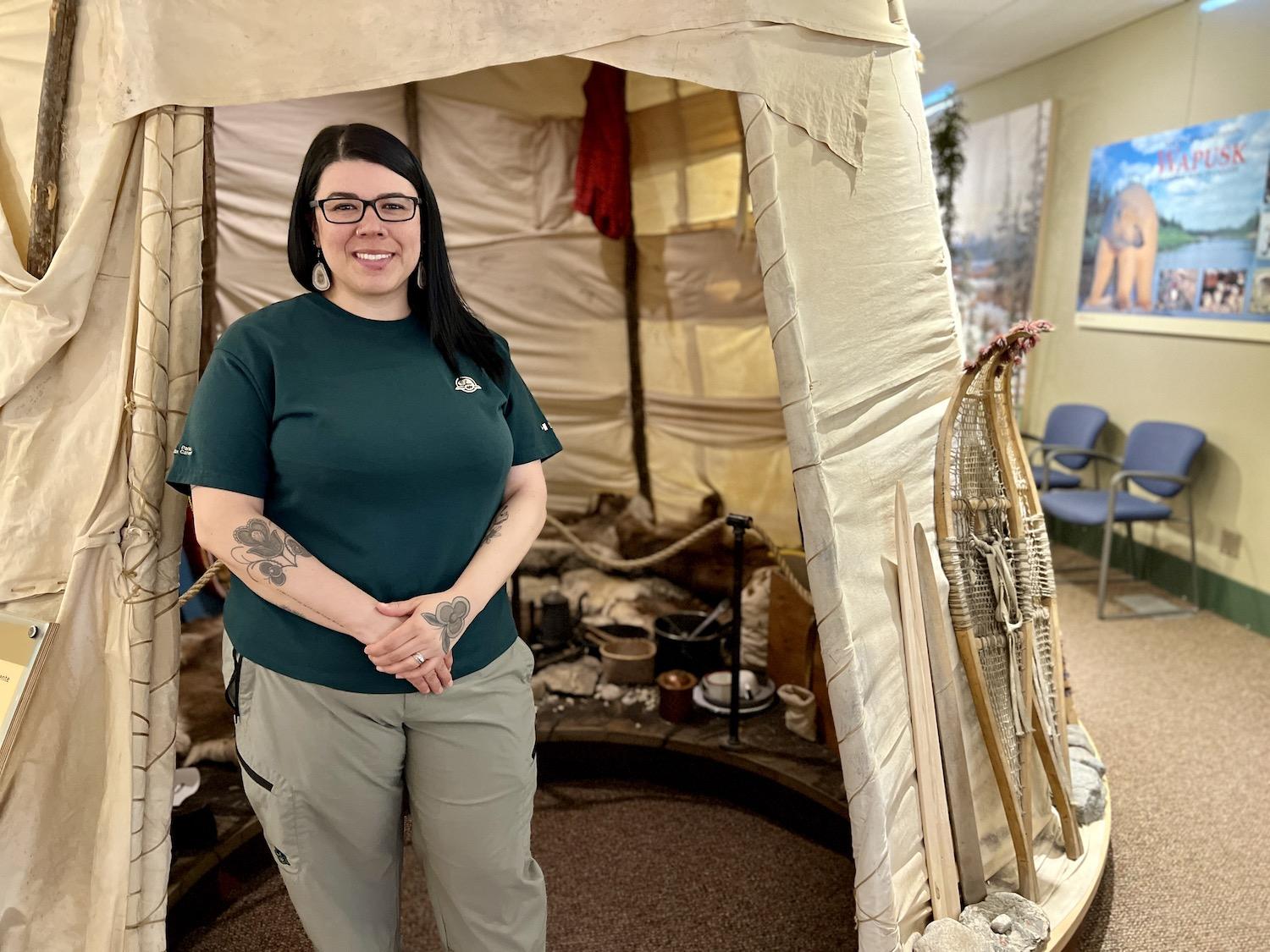
Heather Spence-Botelho gives her "Seventh Generation Churchill" talk in the Parks Canada Visitor Centre in Churchill and has the title Indigenous Knowledge Weaver/Jennifer Bain
In a cozy and private meeting room of the Parks Canada Visitor Centre in Churchill, Indigenous Knowledge Weaver Heather Spence-Botelho launches her talk about being “seventh generation Churchill” by introducing herself in both English and Cree.
“I like to give my presentation as though I’m telling a story,” she tells our group of Canadian and American visitors. “If I had it my way, we’d all be sitting in a big circle. There would be no pictures and we would use our beautiful minds.”
We learn that we are on Treaty 5 territory, the traditional lands of the Swampy Cree, Dene, Inuit and Métis. “We respect the treaties that were made on our lands, and we acknowledge the harms and mistakes of the past," says Spence-Botelho. "We dedicate ourselves to move forward in the spirit of truth and reconciliation.”
A member of the Fox Lake Cree Nation, she has Swampy Cree, Dene and Portuguese heritage. She is the seventh generation of her family to live here on the shore of Hudson Bay in northern Manitoba, and she’s now raising the eighth generation. For her 37th birthday a few years ago, she and eight friends chartered a zodiac and celebrated with Champagne on floating ice sheets.
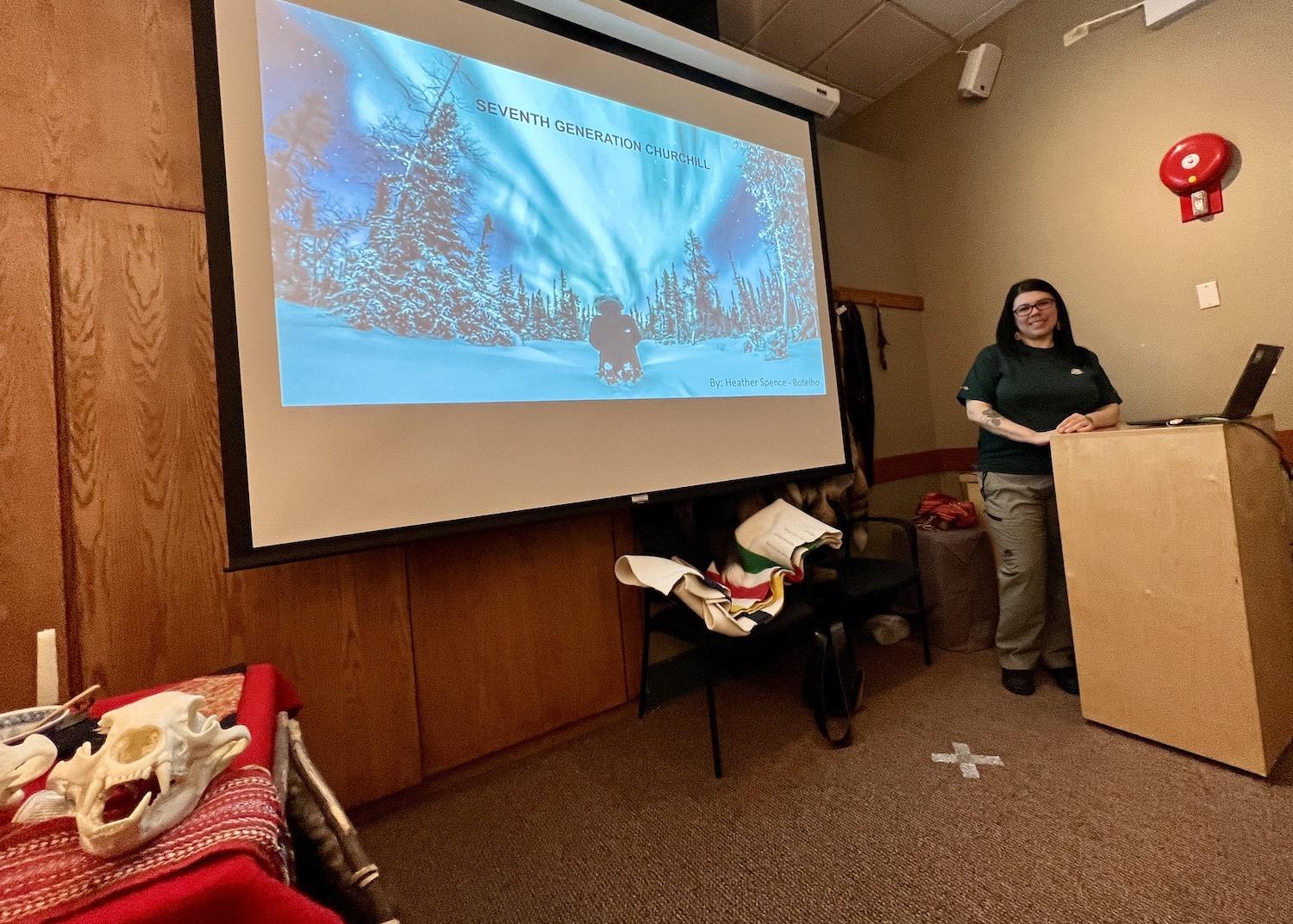
Parks Canada staff, like Heather Spence-Botelho in Churchill, can be booked for private presentations and tours/Jennifer Bain
For the next hour, Spence-Botelho generously shares family photos and videos as she divides her talk into four parts — bloodlines and blood memory, traditional beading history and legacy, traditional hunting and gathering history and legacy, and co-existing with polar bears and beluga whales.
There are joyful moments to do with snowmobiling, paddleboarding with the beluga whales that fill the river here every summer, and visiting York Factory National Historic Site to see the traditional lands of the Swampy Cree.
There are proud moments, like explaining how her Portuguese father did almost all the local landscaping and beautification, and built the giant inukshuk (rock marker) along the coast behind town complex.
There are also tough moments, and we hear how Spence-Botelho’s Cree Dene mom has grappled with abandonment, racism, addictions violence, but “faced her demons, healed her past” and been sober for almost a decade.
Much generational trauma has stemmed from the way that Canada forced Indigenous people off the land and tried to wipe out their cultural identity. “I consider myself a cycle breaker,” says Spence-Botelho. “I continue to heal myself from traumas that includes addictions, lateral violence and religious traumas. These issues are still prevalent in my community and family today, however with each passing season I see people better their lives.”
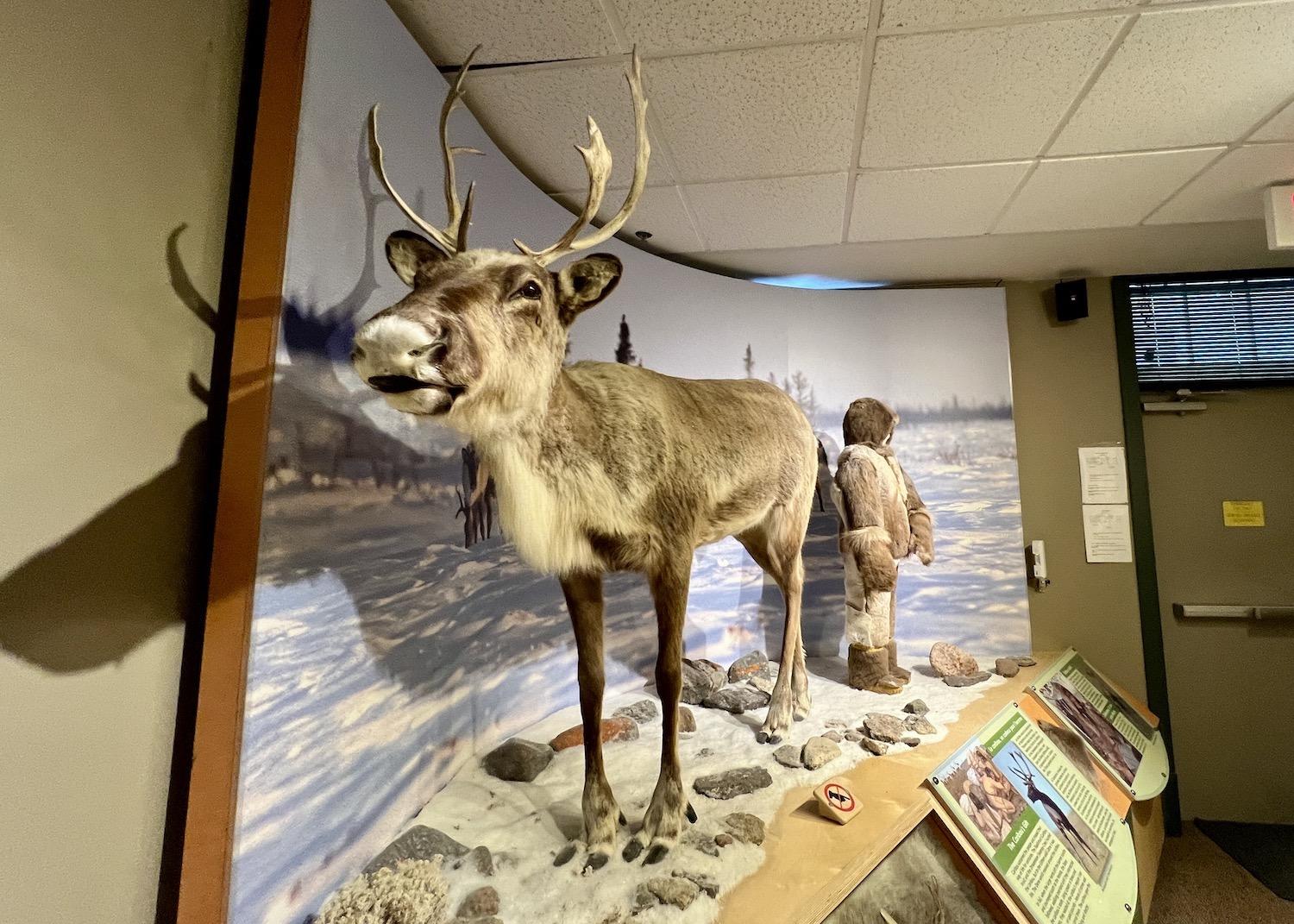
The caribou has long been used by Indigenous people for food, clothing and shelter/Jennifer Bain
Heather MacLeod, the Parks Canada visitor experience manager, steps into the meeting room at the end of the talk. Spence-Botelho’s presentation is in high demand, she says, but you can also book tours and audio-visual presentations from other Parks Canada employees. Those might be wrapped around the three bears of Wapusk National Park (polar, grizzly and black), traditional medicines and the Hudson Bay Co.
Churchill, with a population of 875, calls itself “the polar bear capital of the world” because hundreds of bears gather near town every fall. The bears gravitate to the shore of Hudson Bay every fall waiting for ice so they can hunt ringed seals. The area is a hotspot for beluga whales in the summer and the northern lights (aurora borealis) in winter.
I’ve been here twice — once for the bears for a walking safari with Churchill Wild in October 2016 and once to meet people involved in Indigenous tourism in March before the International Indigenous Tourism Conference in Winnipeg. There are no roads linking this remote community to the south so I took Calm Air from Winnipeg both times, but there’s also a 48-hour train ride on VIA Rail.
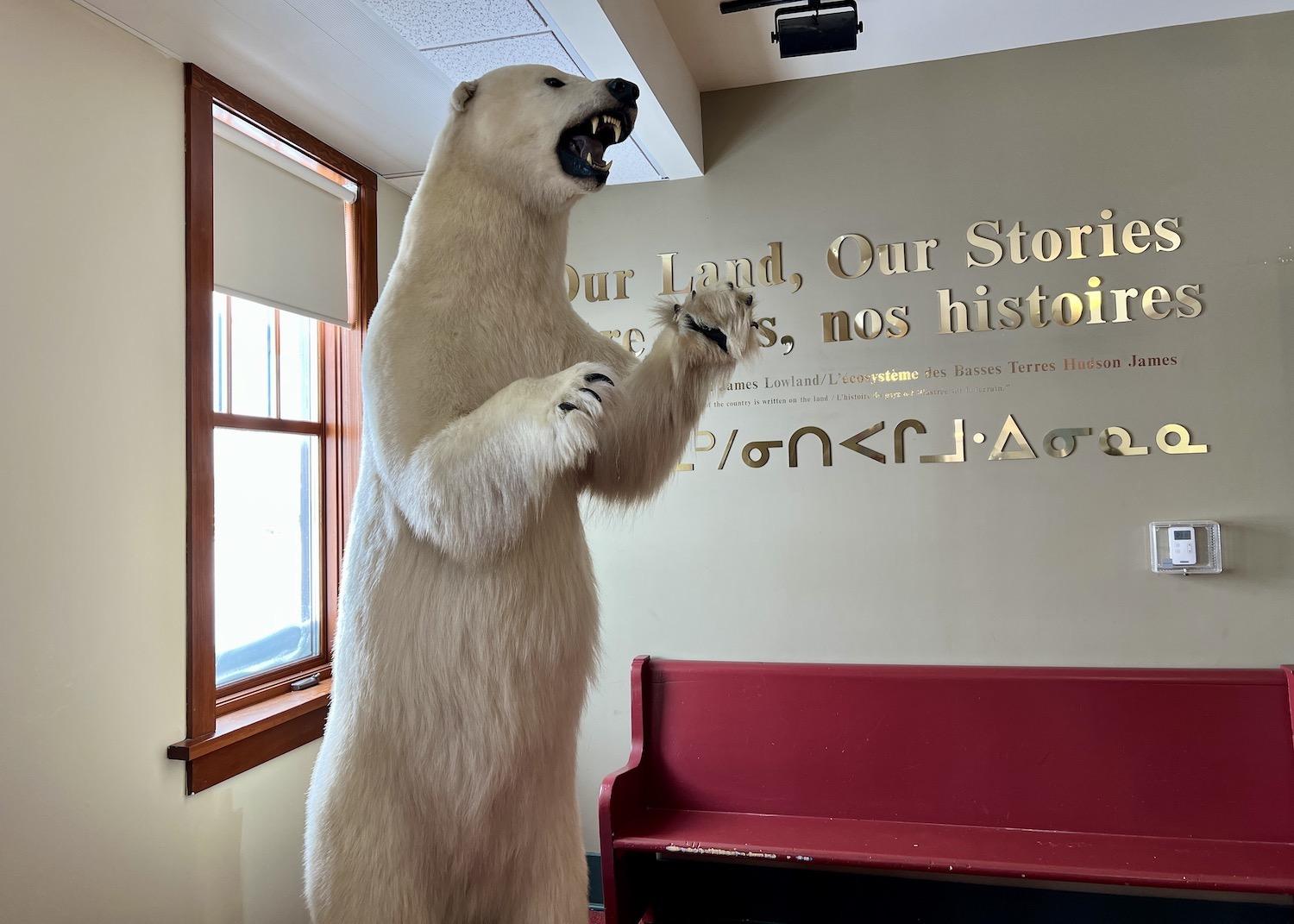
This polar bear looms over vintage train benches in the Parks Canada Visitor Centre in Churchill's historic train station/Jennifer Bain
Churchill is technically the gateway community to Wapusk. Wapusk means “white bear” in Cree and you can’t go into the wilderness park without a bear monitor and so hardly anybody visits.
Established in 1996 at the transition between boreal forest and arctic tundra, the park protects one of the world’s largest polar bear maternity denning areas. There are polar bear viewing opportunities in February and March through Wat’chee Expeditions, while Hudson Bay Helicopters and Custom Helicopters offer aerial tours.
York Factory, the isolated former Hudson Bay Co. post and fur trade hub that Spence-Botelho talked about visiting, is only open in July and August. Most people take boat tours from Gillam but some charter aircraft or undergo challenging canoe trips down the Hayes River. (Gillam is a plane or train ride south of Churchill.)
Prince of Wales Fort National Historic Site and the Cape Merry battery are within easy reach of Churchill, but they are seasonal. Cape Merry is just a seven-minute drive from town, but you need a tour operator to take you across the Churchill River to the fort.
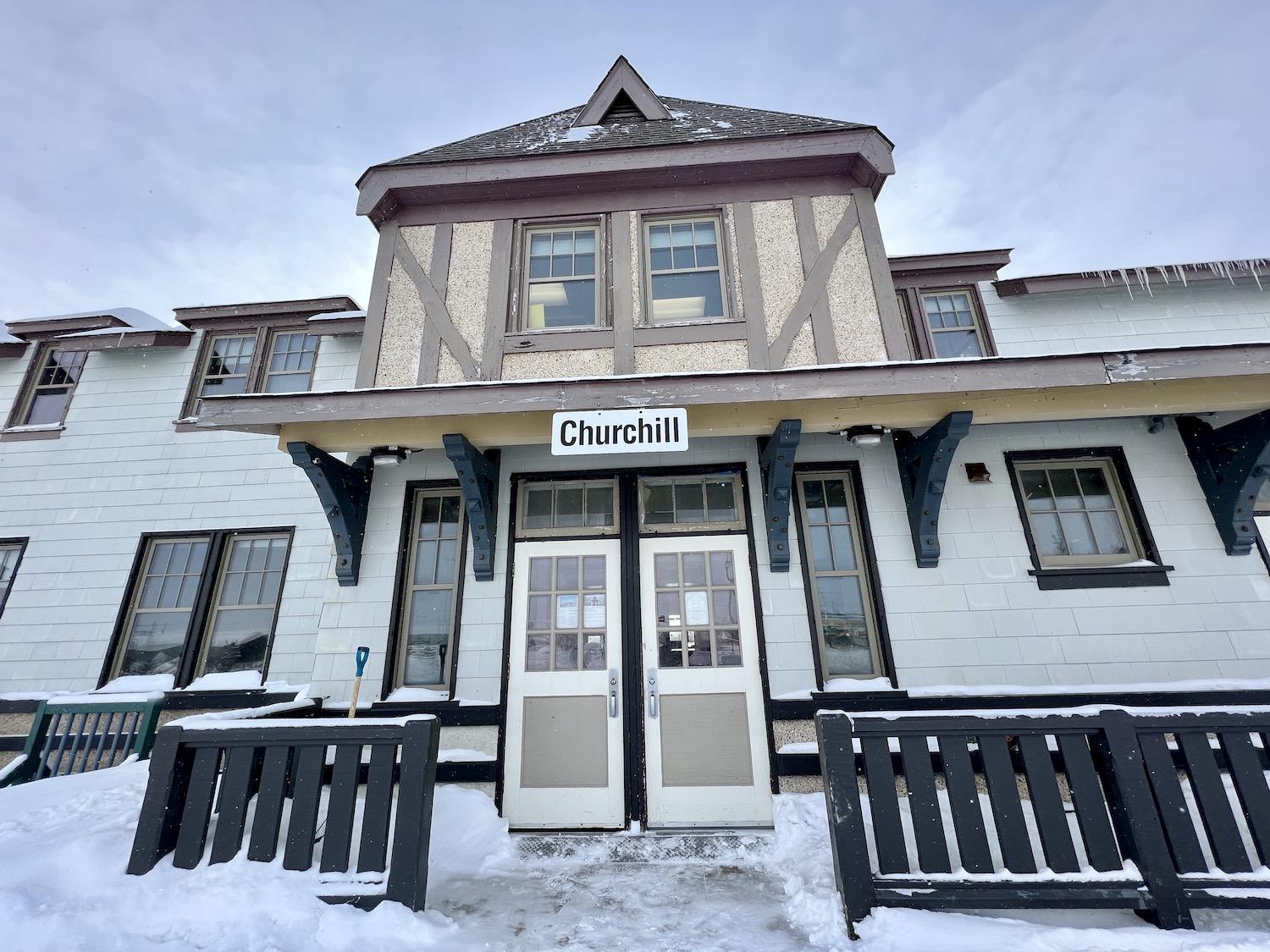
The Parks Canada Visitor Centre in Churchill is housed in the historic (and still active) train station/Jennifer Bain
That leaves me, on both my off-season visits, to make do with exploring the Parks Canada Visitor Centre in Churchill’s historic (and current) train station.
The Hudson Bay Railway, built over muskeg and permafrost and completed in 1929, came here because Prairie farmers campaigned for a rail outlet on the sea to Hudson Bay as an alternative route for exporting grain. The station itself — with its complex roofline, hipped dormers and deep, overhanging eaves — is larger and more ornate than most in other small town railway stations in Western Canada, apparently "reflecting the optimistic outlook of the railway for the economy in the 1930s."
“Teas, lunches and dances were held in the station to welcome the visitors now arriving by train,” reveals interpretive signage with archival photos. “Handicrafts, mittens, moccasins and clothing were created by Churchill residents to be offered for sale or as prizes in fundraising raffles. Local clubs held meetings here and railway employees lived on the second floor.”
Parks Canada bought the building in 2002 and “returned this old station to its former glory.”
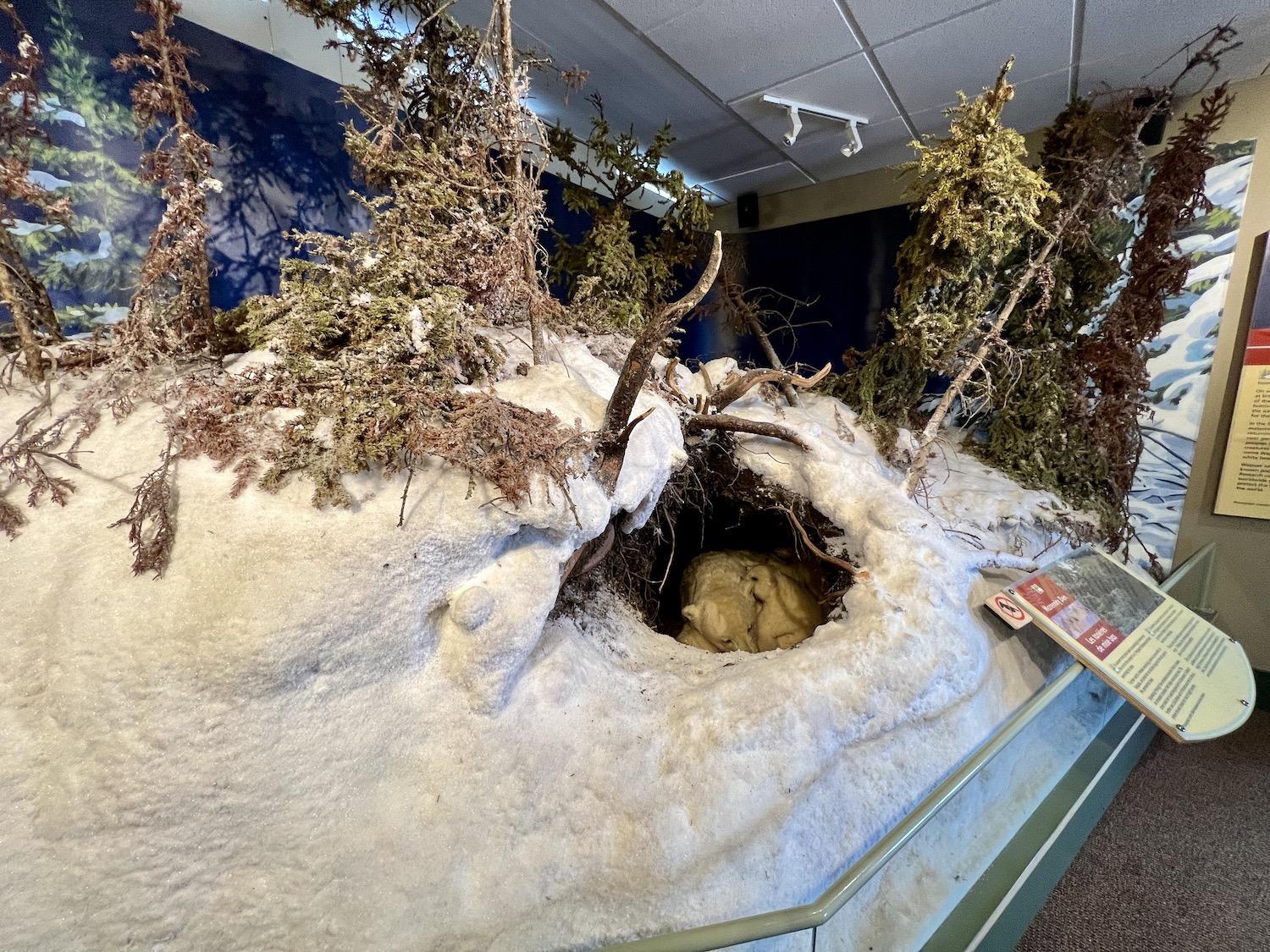
This replica polar bear maternity den is a highlight of the Parks Canada Visitor Centre in Churchill/Jennifer Bain
A permanent exhibit called "Our Land, Our Stories" now details the ecology and human history of Wapusk. There’s an Arctic sundial and models of York Factory and the Prince of Wales Fort. There's information on why Indigenous people prized the caribou for food, clothing and shelter.
Most people are drawn to the taxidermied polar bear that stands on its haunches in the entry by vintage wooden train station benches, as well as to the life-sized replica of a polar bear maternity den. These two things remind me that when I visited in 2016 and saw polar bears near the shore waiting for the winter hunt on sea ice, pregnant females were inland searching for dens. They either find an old den dug into soft peat to the permafrost level or dig a new one in a snowdrift.
“Squeezing through the entrance tunnel she finds or creates an elevated chamber that helps her retain body heat,” interpretive signage by the model den explains. “The snow seals her in and she gives birth in December. In March mother and cubs break out of the den and trek to the sea where she will break her fast of eight months.”
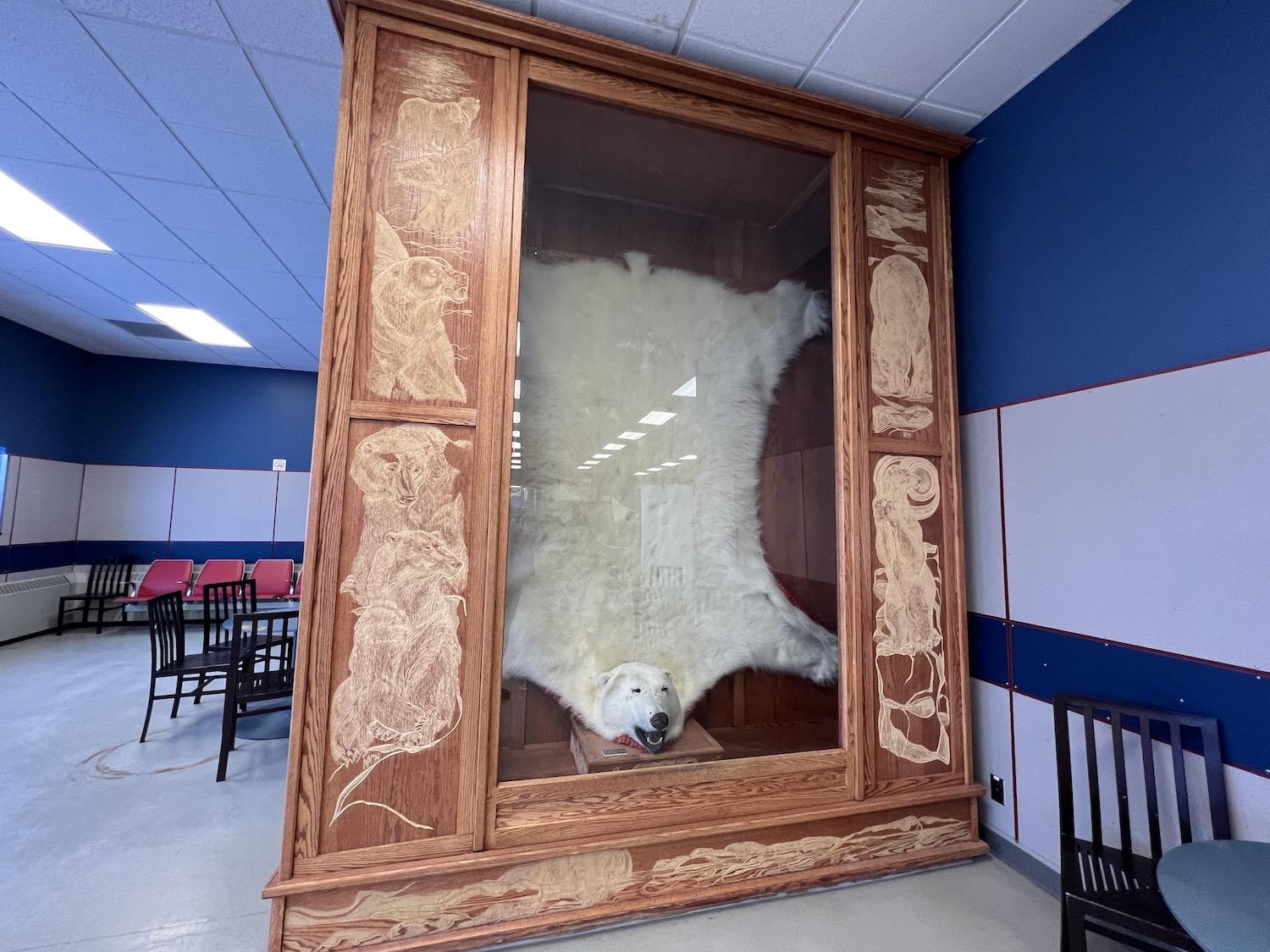
In Churchill Airport, don't miss the polar bear display credited to Inuit hunter Larry White, cabinetmaker Edgar Botelho and artist Donna McPherson/Jennifer Bain
Now when I think of polar bears, I'll think of Spence-Botelho talking about co-existing with animals. Growing up in Churchill, she was taught about polar bears, water safety and off-limit areas, and remembers seeing bears digging in dumpsters and meeting them walking to school. Back then, she remembers with a laugh, natural resource officers came to schools once a year and reminded everyone to "play dead" if faced with a polar bear.
These day you're told to be "big and loud, back away slowly and fight for your life if you have to."
Spence-Botelho doesn't hunt bears or belugas, but has family and friends who follow traditional lifestyles and do harvest them. That polar bear pelt in Churchill Airport behind the Parks Canada display? Inuit hunter Larry White harvested it for Transport Canada to display. The gorgeous wooden cabinet it's displayed in behind glass? That's the work of his best friend Edgar Botelho, an ally of Indigenous people and Spence-Botelho's dad.
While You’re In Churchill:
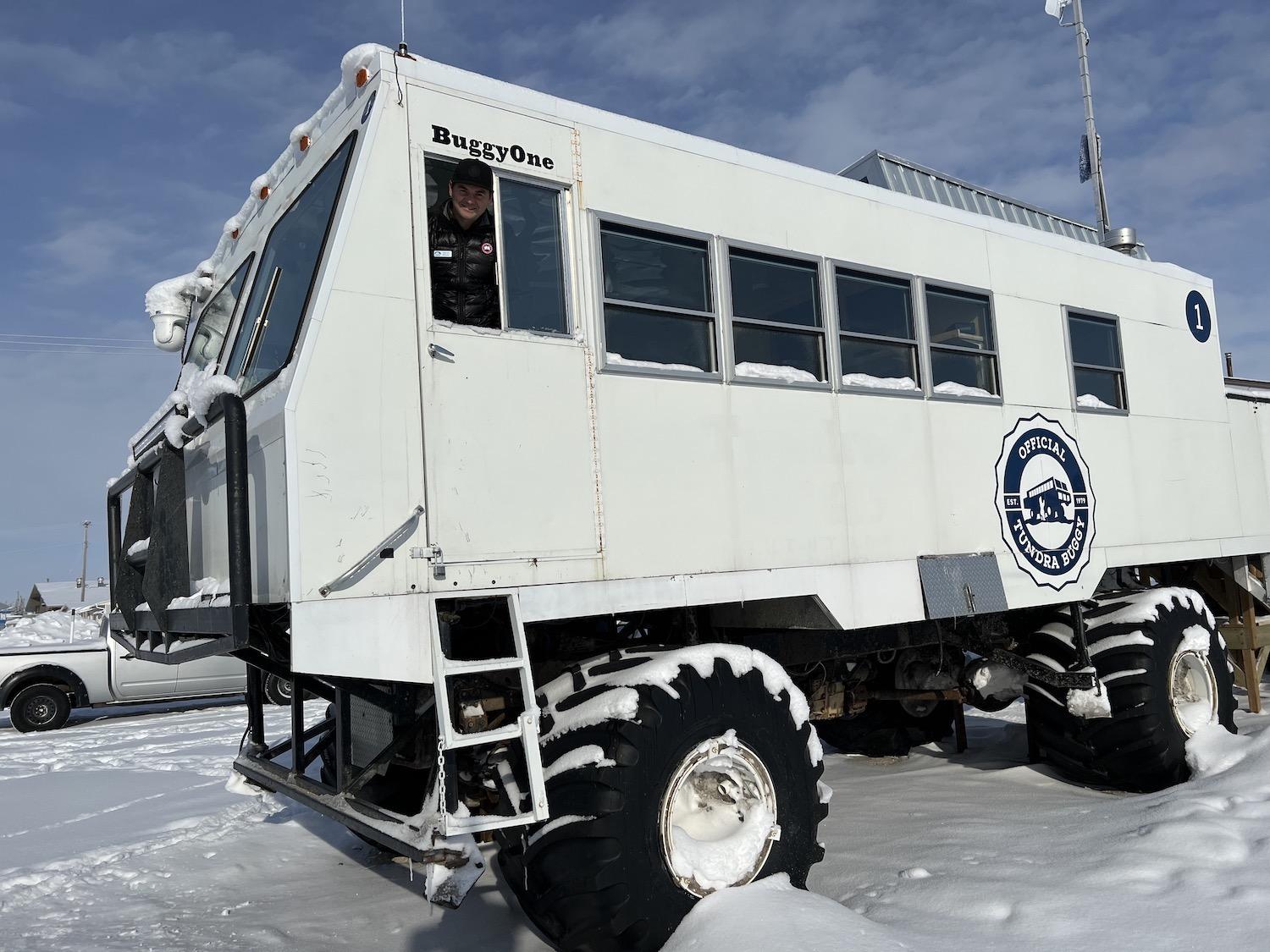
Kieran McIver, manager of Churchill field operations for Polar Bears International, shows off the Tundra Buggy that's used for research purposes/Jennifer Bain
Churchill isn't big but there's plenty to do. Most people book package tours since polar bear safety is paramount and transportation is limited. In March, I stayed at the Indigenous-owned Aurora Inn and learned about dogsledding and Métis culture from Wapusk Adventures. The one-room Itsanitaq Museum showcases Inuit carvings and artifacts. You'll usually find artisans at work at the Arctic Trading Co., as well as an entire outfit made from polar bear (the shop has a special wildlife possession permit so it can display it). Stop into the post office to get the town's polar bear cancellation stamp on your passport.
With Nanuk Operations, we gathered for Indigenous storytelling in a yurt and showshoed while hoping the northern lights would make an appearance. Frontiers North Adventures took us across the frozen Churchill River for a remote dinner experience in a Tundra Buggy, an all-terrain vehicle built to safely showcase wildlife. I also toured another of its Tundra Buggies — the one that Polar Bears International House uses for research. The world’s only non-profit solely focused on conservation of wild polar bears and the Arctic sea ice gets global attention for its polar bear, beluga and aurora cams. At PBI's public interpretive center, you can learn about the Arctic ecosystem and how dwindling sea ice affects polar bears.
I haven't had a chance to stay at the Churchill Northern Studies Centre, but finally visited the non-profit that hosts researchers and sells “learning vacations” that are equal parts science, tourism and culture. On the way out there with North Star Tours, I heard that a mother polar bear had recently been spotted with her cub, but we didn't see them. Instead we stopped at the "polar bear jail" (the Polar Bear Holding Facility) where food-conditioned bears that come into town are isolated before being relocated. It was closed because the bears are out hunting seals on the ice, so we admired how Winnipeg artist Kal Barteski painted the building to resemble a sleeping bear as part of the SeaWalls Churchill mural project.
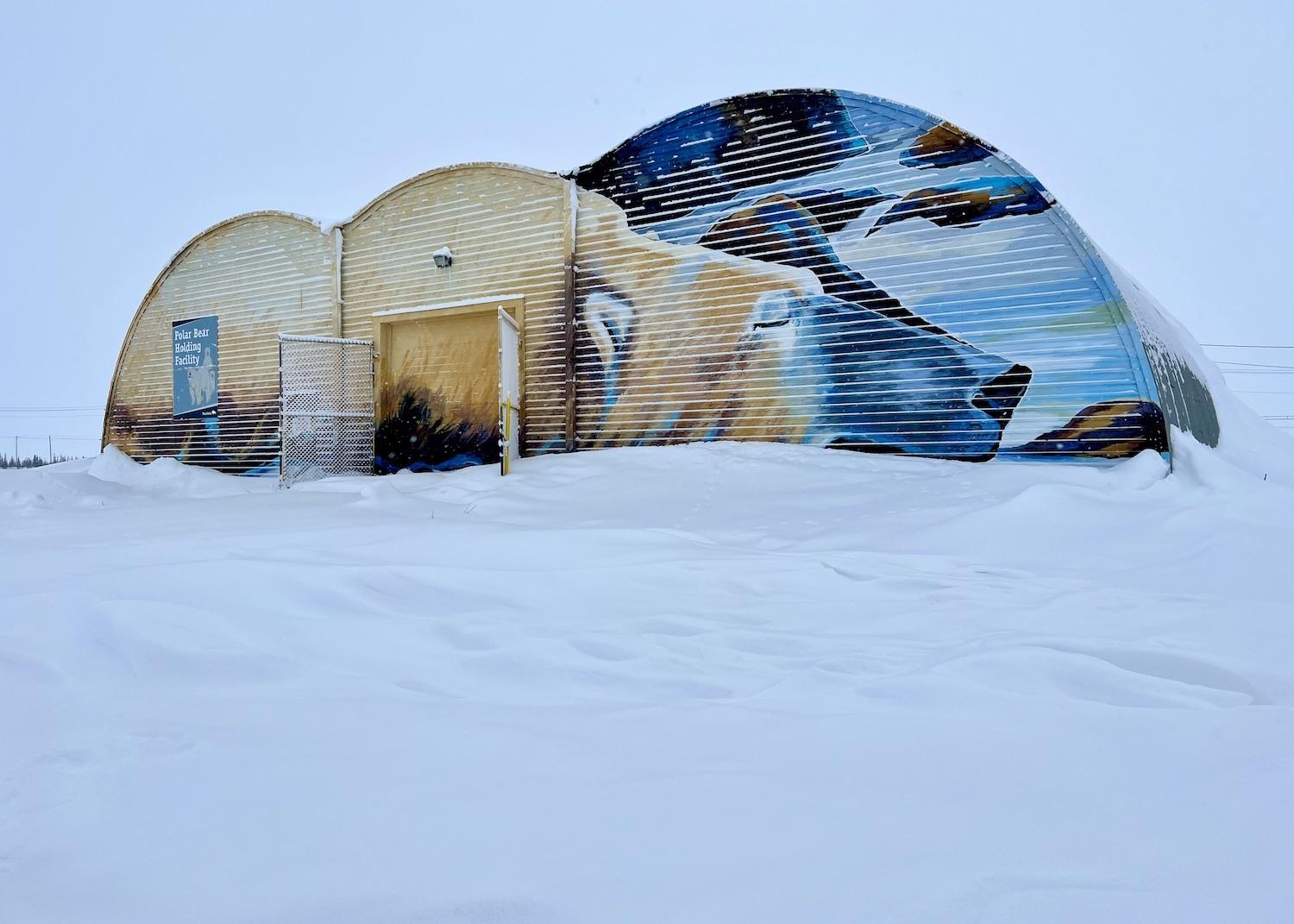
The Polar Bear Holding Facility ("polar bear jail") in Churchill lends itself to artist Kal Barteski's mural as part of SeaWalls Churchill/Jennifer Bain


